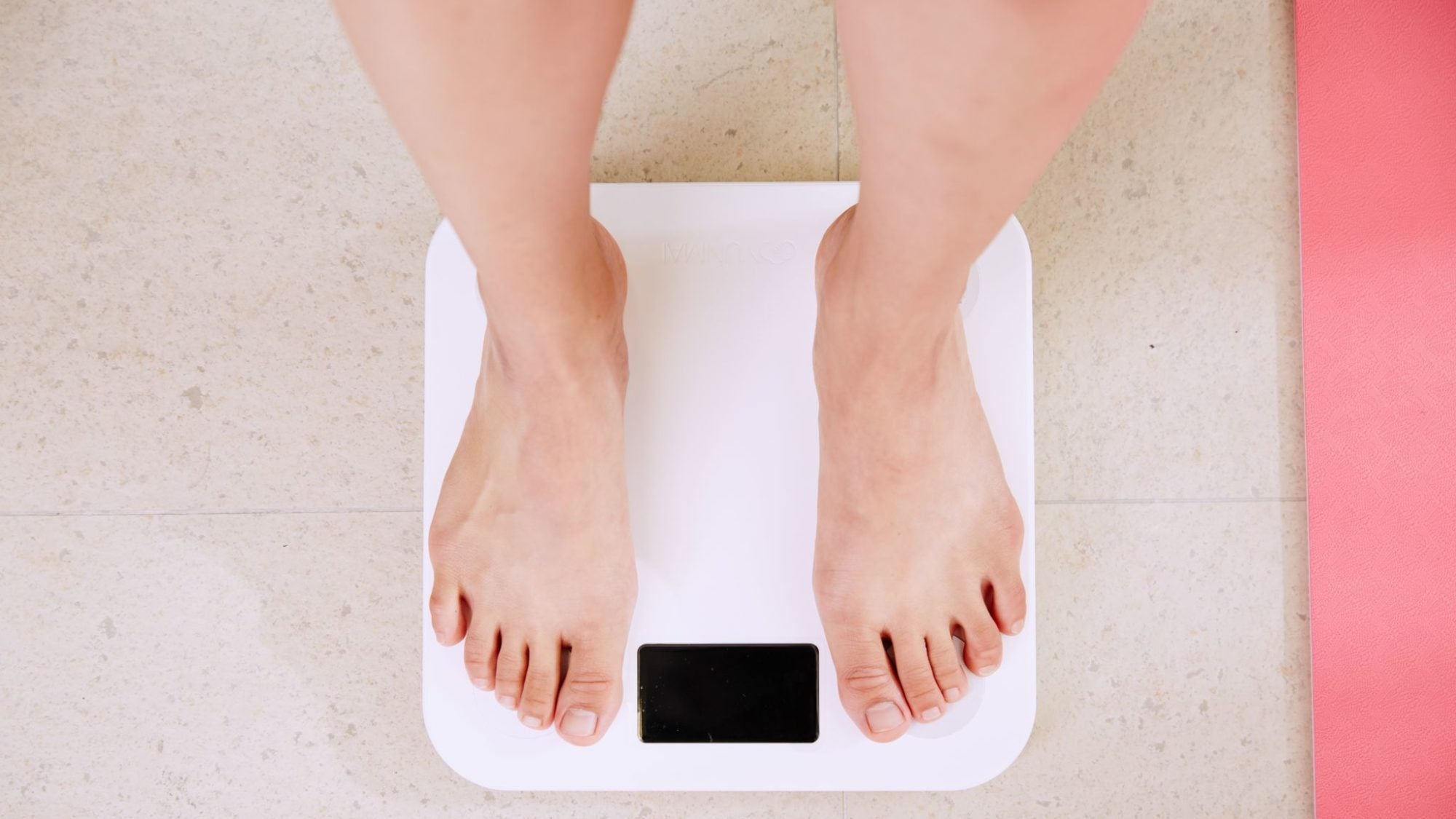Keto Plateau: Conquering Weight Loss Stalls on Low-Carb Diets

But often, new keto-ers will start off with a bang. They'll have great early success with their scales. They'll lose 4 pounds, 6 pounds, maybe 8 or 10 within the first couple of weeks.
Their pants will feel looser. They notice a difference in energy levels and appearance. Things are going well. But all of a sudden, they hit a wall.
Enter the keto plateau.
In this article we'll go over why weight loss plateaus on the ketogenic diet, and what you can do to get the scale moving in the right direction again.
One of the main reasons for the keto plateau is that most people are eating hidden carbs or the wrong foods on keto. Make sure you're sticking to the Keto Food List and not sabotaging your diet.
Why Weight Loss Plateaus on Keto
First, we'll start with a truth:There are a lot of reasons your weight loss may be stalling on the ketogenic diet. It could be the quality of food you're eating, or the quantity. It could be your hormones or your metabolic state. Your age, your gender, your lifestyle, how much or how little you move, your stress levels, where you are in your hormonal cycle...
Most commonly, however, especially for the first plateau that tends to happen a few weeks after beginning the ketogenic diet, weight loss plateaus because your body has shed the water it was retaining on a higher carb diet and has adjusted to ketosis.
Do not mistake this weight loss plateau as a fat loss plateau.
That's why we like to call it the keto plateau -- your body shed a great deal of weight because water carries weight. And it also shed some fat if you were eating the right foods and eating at a caloric deficit.
Further reading: Calories Vs. Macros: Track Both to Supercharge Weight Loss
Your dress size and flatter tummy aren't all in your head. You've likely lost both fat and water weight, which weighs you down as bloat and makes you feel (and look) heavier than you are.6 Ways to Overcome Your Keto Plateau
Keto plateaus can be frustrating and demoralizing. If your weight is not budging anymore, here are the 6 things you can do to break a weight-loss stall.#1: Watch What You're Eating (No, Really)
Did you know that most people dramatically underestimate how many calories they consume by up to 25%?That number creeps even higher for obese or overweight individuals -- overweight women have been shown to under-estimate by 57%[1]. It's not just everyone else, though, as studies have shown that even registered dieticians do so (though only by 10%)[2].
There are ~3500 calories per pound of stored fat. In contrast, there are about 100 calories in just 1 tbsp of butter, so if you’re eating more than you think you are (even just by a spritz or two of oil), it makes sense that you'd experience a keto plateau.
To overcome the stall and get back on track, keep a food journal or use an app like MyFitnessPal, Carb Counter or Senza.
Research shows that keeping a food diary can nearly double weight loss[3].
#2: Track Your Daily Macros
You’ve probably read that a healthy keto diet follows a 75:20:5 ratio.This means that 75% of your calories should come from healthy fats, 20% from protein, and 5% from carbs. To visualize that, here's what the keto food pyramid looks like:

Carbs, fats, and proteins are macros (short for macronutrients). A ketogenic diet doesn’t just focus on the number of calories consumed, but on the sources of those calories (fat, protein, and carbs) and the ratio between them.
Because sticking to the 75:20:5 macro ratio is critical to achieving and staying in ketosis, tracking your daily macros allows you to adjust your diet frequently so you can better achieve your weight loss goals.
You might be surprised as to how many carbs you're eating if you do track.
#3: Try Intermittent Fasting
Intermittent Fasting (IF) is an “eating pattern,” not a “diet.”When you're intermittent fasting, you cycle between periods of eating and fasting. Fasting sounds daunting, but it's made a lot easier when you do so intermittently.
Rather than eating every time you feel hungry, IF limits eating to certain times throughout the day. By limiting the times you eat, you’ll consume fewer calories and lose weight.
Most intermittent fasters tend to follow "8/16 intermittent fasting", or a feeding window of 8 hours followed by a fasting window of 16.
An example schedule might be eating from 11am-7pm and fasting from 7pm-11am.
However, this only works if you don’t compensate for the fasting periods by eating too many calories during the eating periods. And of course, sticking to a healthy keto diet during the eating periods is critical.
Many people new to intermittent fasting will ease into it with something called "fat fasting", which is where you consume keto coffee in the morning.
Keto coffee, or "fat coffee" is coffee with added fats to keep you satiated and mentally sharp until the feeding window. Fat coffee provides calories and nutrients (most people use MCT oil or a keto coffee creamer) to give you energy, but not as many as a traditional breakfast.

Break Through Your Plateau: Join the KETO 30 Challenge
Your step-by-step roadmap to losing weight with the ketogenic diet. Complete with a community for support and accountability, free meal plans developed by a nutritionist, and all the products you need to reach your goals. Join the Challenge Now#4: Track Your Caloric Intake
Even if you’re sticking to a healthy keto diet, you’ll only lose weight if you’re burning more calories than you’re taking in. The ideal caloric intake depends on age, metabolism, and exercise, among other things, so tracking both the calories you take in and the calories you burn allows you to adjust your diet and exercise to fit your Keto goals.There are lots of great calorie tracker websites and apps to make this process easier.
#5: Exercise More or Differently
Fat loss is complicated, but the most simple way to understand it is calories in vs. calories out.Calories in = your food intake.
Calories out = your metabolism, and how much you move.
Exercise isn't always everyone's favorite activity (that's why many people love keto - they get results without having to work out), but it does move the needle and is good for you.
If you're already working out but still plateauing, keep in mind that your body adapts to exercise much faster than you think.
If an exercise you used to struggle with is no longer a challenge, chances are it’s not nearly as effective for weight loss as it was when you started. Try mixing up your workouts every month to keep your body guessing and burning fat. If you’re running twice a week, try increasing it to every other day, or adding in short sprints to boost your heart rate. If you generally do yoga or pilates, try mixing in weight training.
Give our workout programs a try to keep things fresh.
#6. Measure Inches, Not Pounds
Household scales show our weight, but they don’t show our body composition (fat, muscle, bones, and organs).They also don't measure how much water you're retaining.
With a ketogenic diet and exercise, you’ll lose fat and build muscle, but because muscle weighs more than fat, you might be losing body fat without seeing a change in your weight. Instead of weighing yourself, try other metrics for fat loss:
- Take your measurements. Measurements can give you a more accurate picture than pounds. If you’re losing inches, you’re probably losing body fat.
- Measure how your clothes fit. If you can fit into a pair of jeans you couldn’t wear before, congrats! You’re on the right track.
- Set performance goals. Weight fluctuates, so instead of focusing on what you can’t always control, find a more tangible goal. See how many push-ups you can do or how far you can run. If you can do more than you could last week, you’re probably losing body fat and building muscle.
- Measure your body fat. There are lots of different ways to do this (BMI tests, online calculators, etc.). They can often be guesstimates, but consistently measuring yourself under similar conditions can give you a more accurate picture of your body composition.
If you're struggling with your keto plateau, and want some extra guidance to get you through this painful period, join us and 10,000+ participants in the Keto 30 Challenge for FREE. We'd love to help you through this.
-
Posted in
Authority Article, Keto Mistakes, Nutrition, Nutrition Article, Starting Keto, Weight Loss




